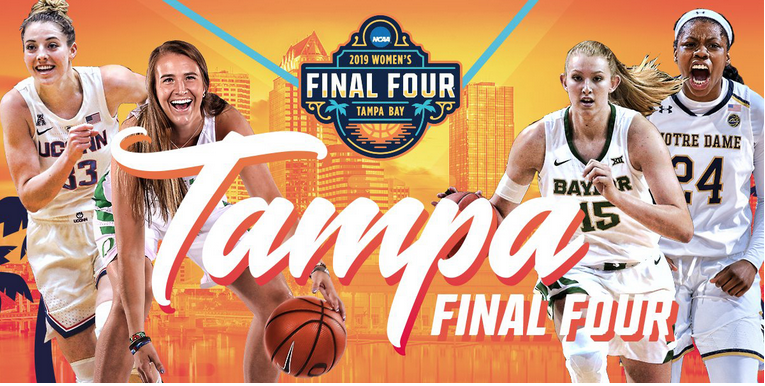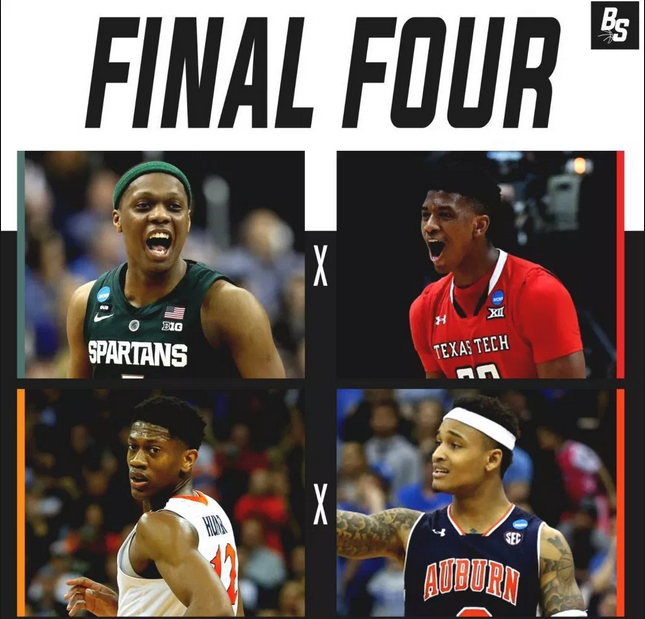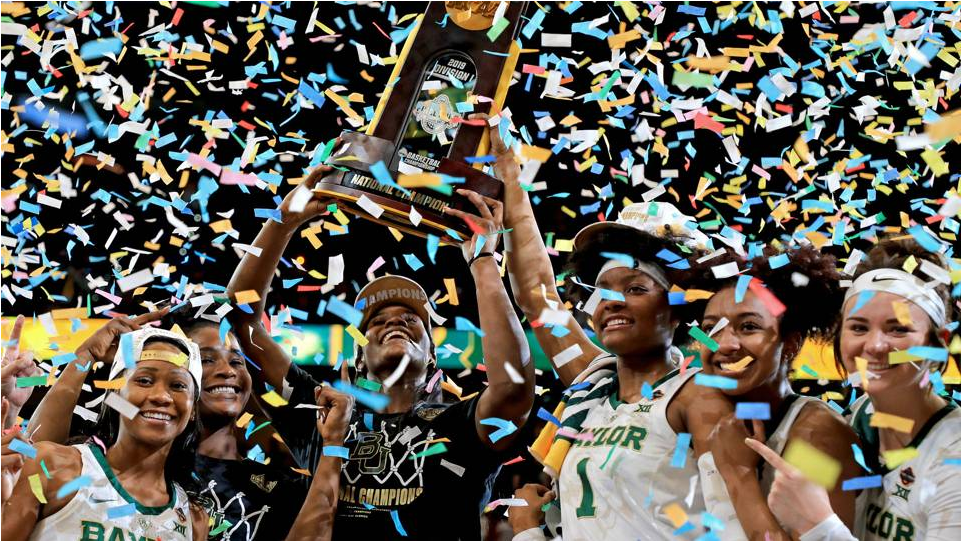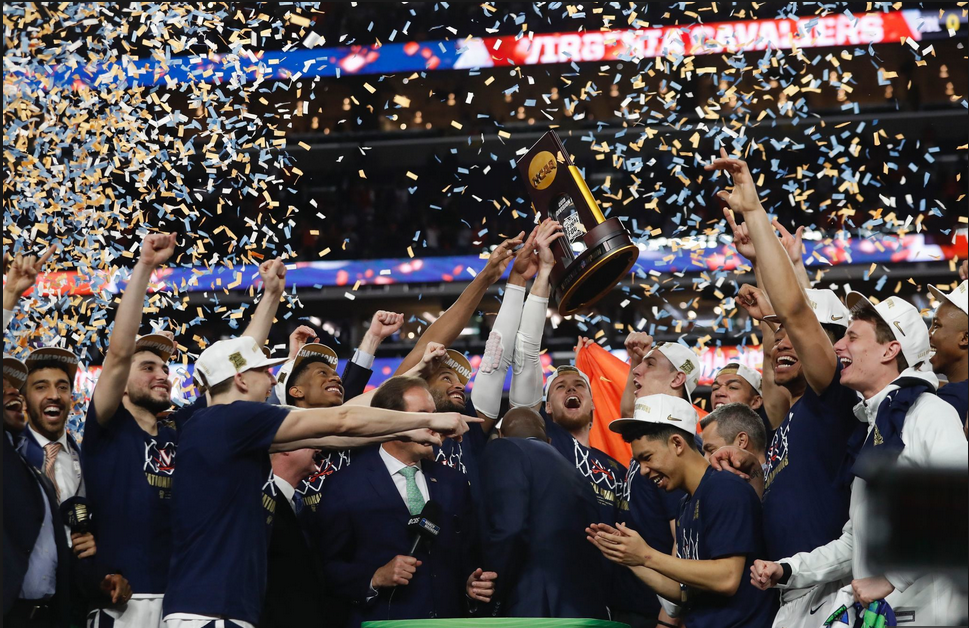Organizers hype the annual NCAA Division 1 Men’s and Women’s Basketball Tournaments as “March Madness.” They do so to exploit “the thrill of victory and agony of defeat” of watching low-seeded teams (a.k.a. Cinderellas) upset top-seeded ones — often with buzzer-beating hail marys. Unfortunately, the tournaments rarely live up to this hype, respectively.
True to form, the women’s did not: On one side of the bracket, both top-seed Baylor and second-seed Iowa made it to the Final Four; on the other side, both top-seed Notre Dame and second-seed Stanford made it. There was not a Cinderella in sight.
The men’s, however, provided a little more drama in this respect: On one side of the bracket, top-seed Duke did not even make it to the Final Four. This, despite the best efforts of Zion Williamson – who the media were hyping as so dominant, he looked like LeBron James playing against high-school kids.
In fact, Virginia was the only top seed – in any of the four regions – to make it. The others were second-seed Michigan, third-seed Texas Tech, and fifth-seed Auburn.
Mind you,
I decided years ago to forego the cheap thrill of filling out brackets and feigning agony as my picks got knocked off like ducks at a carnival shooting gallery. Granted, if I were still an indentured servant at a big law firm, I would’ve welcomed the respite from drudgery, which Bracketology for office pools provides. The aim is clearly not to guess the result of each game; it’s to see whose bracket sustains the least number of casualties throughout the tournament.
(“NCAA March Madness — and Then There’s the Women of UConn,” The iPINIONS Journal, March 30, 2017)
As the title to that March 2017 commentary indicates, I’ve been trying for years to draw more media attention to the women’s game. Unfortunately, what I wrote in this regard a decade ago remains as relevant today as it was back then.
Here is my forlorn pleading from “UConn Routs Louisville to Win NCAA (Women’s) Championship,” April 8, 2009:
____________________
Instead of commanding network coverage in primetime, like the men’s tournament final, the women’s was relegated to cable last night, which guaranteed only a fraction of the viewership. TV executives wonder why they can’t get better ratings for the fledgling women’s professional league — the WNBA. Well, it might have something to do with the way they keep dissing women’s college basketball in this fashion.
Moreover, what does this disparate coverage say to female college athletes, as well as to young girls, who we encourage to have the same interest in sports as young boys? Frankly, it says that chauvinism, sexism, and discrimination against women in sports not only still exist but are blithely tolerated.
____________________
Sure enough, chances are that, on Sunday night, you were binge watching a series on Netflix or zombie watching American Idol, World of Dance, or the 54th Annual Academy of Country Music Award on network TV. This, while teams in this year’s women’s final were putting on the most exciting performance in sports in decades. But, again, they were doing so in the proverbial wilderness on cable TV.
It was a rematch seven years in the making as No. 1 Baylor and No. 1 Notre Dame squared off in the national championship for the first time since 2011-12.
This time around, the top seeded Fighting Irish were hoping to defend their title and take down the Bears — a feat they weren’t able to accomplish in their first title meeting. But, history would repeat itself as the Kim Mulkey-led Bears claimed their third national championship with an 82-81 win.
(The Sporting News, April 7, 2019)
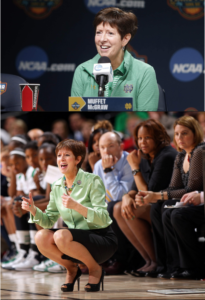 I clearly couldn’t care less who won. In hindsight, though, I wish it were Notre Dame. This, because I was so heartened by the clarion call head coach Muffet McGraw made last week. After vowing henceforth to hire only female assistants, she called on coaches and athletic directors across all college and professional sports to do the same.
I clearly couldn’t care less who won. In hindsight, though, I wish it were Notre Dame. This, because I was so heartened by the clarion call head coach Muffet McGraw made last week. After vowing henceforth to hire only female assistants, she called on coaches and athletic directors across all college and professional sports to do the same.
Her laughable first name notwithstanding, McGraw offered this very serious reason for doing so:
I’m getting tired of the novelty of … the first female governor of this state … the first female African-American mayor of this city. When is it going to become the norm instead of the exception?
When you look at men’s basketball and 99 percent of the jobs go to men, why shouldn’t 100 or 99 percent of the jobs in women’s basketball go to women? … People hire people who look like them … that’s the problem.
(NPR, April 6, 2019)
In a similar vein, McGraw might have railed against the unfairness of college athletes generating fat paychecks for everyone associated with college sports, including her, while being unable to even afford tickets for their parents to watch them play.
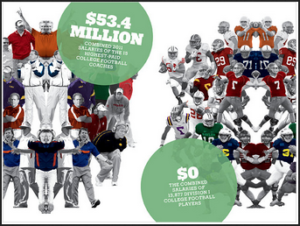 As it happens, I’ve been in the vanguard of those calling for the NCAA to pay all “student athletes.” It should pay them commensurate with the revenues they generate for their respective colleges.
As it happens, I’ve been in the vanguard of those calling for the NCAA to pay all “student athletes.” It should pay them commensurate with the revenues they generate for their respective colleges.
I’ve delineated my argument for this in many commentaries, including “Student Athletes Make Billions (for Colleges) but Most Graduate Poor…and Dumb,” January 16, 2014, “Salaries of College Coaches Reflect Enduring Master-Slave Relationships,” October 28, 2016, and “Reggie Bush Forfeits Heisman Trophy,” September 16, 2010.
In that last commentary, I pooh-poohed the manifest fraud of insisting that big-time college basketball and football are still amateur sports. Interestingly enough, the NCAA formed a special committee recently to redress the root causes of this fraud.
‘The recent news of a federal investigation into fraud in college basketball made it very clear the NCAA needs to make substantive changes to the way we operate, and do so quickly,’ [NCAA president Mark] Emmert said. …
Emmert and the NCAA have put together a committee that will be chaired by former U.S. Secretary of State, Condoleezza Rice … to rework the sport’s weaknesses.
(CBS Sports, October 11, 2017)
It’s an open secret that much of this fraud stems from third parties paying student athletes crumbs under the table. Yet this committee’s recommendations did not even address the indentured servitude inherent in players generating so much for so little. In truth, its recommendations made about as much sense as blaming lapses in policing for the scourge of drugs in American society.
 And, as if all that is not damning enough, there’s this unfolding scandal:
And, as if all that is not damning enough, there’s this unfolding scandal:
Lawyer Michael Avenatti continued to attack Nike on Monday, accusing the sports apparel giant of engaging in bribery in order to entice top college athletes into lucrative contracts and reprising a previous claim involving Duke University star Zion Williamson. …
‘For years, Nike and its executives have been funneling payments to amateur players, high school players, and to their handlers and family members, in an effort to get them to go to colleges that were ‘Nike colleges’ and ultimately to …. sign a shoe deal with Nike,’ Avenatti recently told CBS News’ Jericka Duncan.
(CBS Sports, April 8, 2019)
Truth be told, Avenatti has a well-earned reputation for being a grandstanding, self-aggrandizing shyster. But the reason his accusations against Nike resonate is that they seem more systemic than shocking.
More to the point, though, Avenatti is only pissing on our cause and throwing poor, mostly black college athletes (and their parents) under the bus. And he’s reportedly doing this because Nike refused his extortion demand for over $20 million to keep these wink-wink payoffs secret.
Michael Avenatti, a high-profile attorney and critic of President Trump, was arrested in New York on Monday and charged in what prosecutors called a brazen bid to extort millions of dollars from Nike by threatening to damage the company’s image.
Simultaneously, federal prosecutors in Los Angeles filed separate charges accusing Avenatti of wire fraud and bank fraud, alleging that he took a client’s settlement money and used it to cover costs related to Avenatti’s coffee shop business and other personal expenses. Avenatti is accused of concealing from the client where the money was.
(The Washington Post, March 25, 2019)
Like I said, this man is an incorrigible shyster who makes my profession seem even more disreputable than stereotypes suggest.
Meanwhile, last night’s men’s final played out on network TV. This assured the game of so many viewers, it made those who scavenged the night before to watch the women’s seem like members of a sports cult.
But frankly, I have already said all I care to about the men’s tournament. Not to mention that the nature of college sports is such that anyone who attended college fancies himself an expert. This is why commenting on the game itself – even by professional sports analysts – has the drowning impact of tossing a pebble into the ocean.
Therefore, in the spirit of Coach McGraw, I shall suffice to give the men’s tournament this short shrift:
A year after exiting the court as a picture of embarrassment, the first No. 1 seed to lose to a No. 16 in the men’s N.C.A.A. tournament, Virginia left wearing a crown on Monday night.
The Cavaliers defeated Texas Tech, 85-77, in overtime for the university’s first national basketball championship, which carried with it immeasurable redemption.
(The New York Times, April 8, 2019)
But I’d be remiss, perhaps even disloyal, if I fail to acknowledge that the Cavaliers hail from my home state. So rah rah for the home team, eh.
Congratulations to Baylor and Virginia!
Related commentaries:
NCAA 2018…
Indentured servitude…
